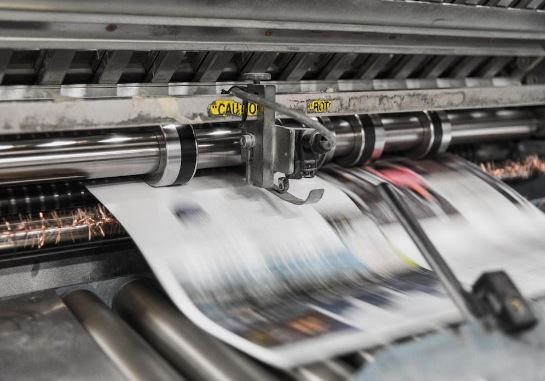
Adding a logo to a tarp can be an effective way to promote your brand, create brand recognition, and make your presence known at outdoor events especially if you’re using a long lasting and low cost tarp material as a foundation. But with so many different tarp materials and printing methods available, it can be challenging to determine the best approach for your needs. Exploring the advantages and limitation of each will enable you to be better equipped to make an informed decision. Here are four methods for adding logos to your tarp that you should know about.
Digital Printing

Digital printing is a popular method for adding logos to tarps because of its numerous benefits. It is highly accurate and produces sharp and detailed images. This means that even small text and intricate logos can be printed with clarity, making it an ideal option for businesses looking to create professional and high-quality advertising materials. Also, digital printing is fast and efficient. This allows for quick turnaround times and the ability to produce large quantities of tarps in a short amount of time.
However, there are some disadvantages to using digital printing to add logos to tarps. One of them is that it may not be as durable as other printing methods, such as screen printing. Tarps that are digitally printed may be prone to fading and peeling over time, especially if they are exposed to harsh weather conditions or excessive sunlight. Digital printing may not also be suitable for some types of materials. This means that you may need to carefully consider the type of material you choose for your tarps before opting for digital printing.
Screen Printing
Screen printing is a common method for adding logos and designs to tarps. It’s versatile and allows for a high level of customization, as designs can be printed in a variety of colors and on a range of tarp materials. It’s also durable and long-lasting, as the ink is heat cured onto the fabric, making it resistant to fading and flaking. This means that logos and designs can remain vibrant and visible even after prolonged exposure to the elements. This durability also makes screen printing a cost-effective option, as businesses and organizations can be sure that their tarps will last for long without needing to be replaced.
Furthermore, screen printing is a highly precise method of adding logos to tarps. The process involves creating a stencil, or "screen," which is used to apply ink to the fabric. This stencil can be finely detailed, allowing for intricate designs to be accurately reproduced. The ink can also be precisely placed on the tarp, ensuring that logos and designs are positioned exactly where they need to be. This precision is particularly important for businesses and organizations that intend to use their tarps to communicate important information or to promote their brand.
Using screen printing can, however, be time-consuming and labor-intensive, particularly for larger orders or complex designs. It may also not be suitable for all tarp materials, as some fabrics may not take to the ink as well as others.
Heat Transfer
Most people love heat transfer because of its speed and efficiency. Unlike screen printing, which can be a time-consuming and labor-intensive process, heat transfer involves applying heat and pressure to transfer a pre-printed design onto the tarp. This means that logos and designs can be added quickly and easily, making it a good option for businesses and organizations that need to produce large quantities of tarps.
Heat transfer can also be used on a wide range of tarp materials, including vinyl, polyester, and nylon. Through this method, businesses and organizations can create customized tarps that accurately reflect their branding and messaging, regardless of the material of the tarp.
While heat transfer has several benefits, its logos may be prone to cracking, fading and peeling, especially if the tarp is exposed to harsh weather conditions or heavy use. They heat transfer process may also be sensitive to temperature and pressure, meaning that slight variations in the application process may result in inconsistent or low-quality results.
Embroidery
Embroidery is a traditional and highly effective method for adding logos to tarps. It involves stitching the design directly onto the tarp. Logos created through this method are less likely to peel or crack. So, it can be a great option for you if you want your tarps to withstand heavy use or prolonged exposure to the elements.
Embroidery machines also use digital designs to create highly detailed and intricate logos that are accurately reproduced. The thread used in embroidery also comes in a wide range of colors, allowing businesses and organizations to create customized tarps that accurately reflect their branding and messaging.
The Bottom Line
Adding logos to your tarp can be an effective way to promote your business or organization. However, you need to choose the right method depending on your needs. The right method will enable you to create customized tarps that accurately reflect your branding and messaging, and stand out from the competition.

No comments yet